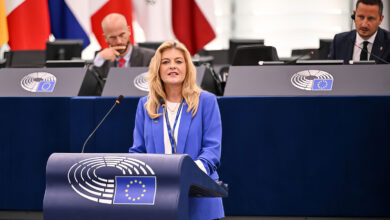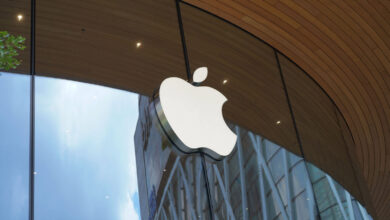Growing on Pinterest
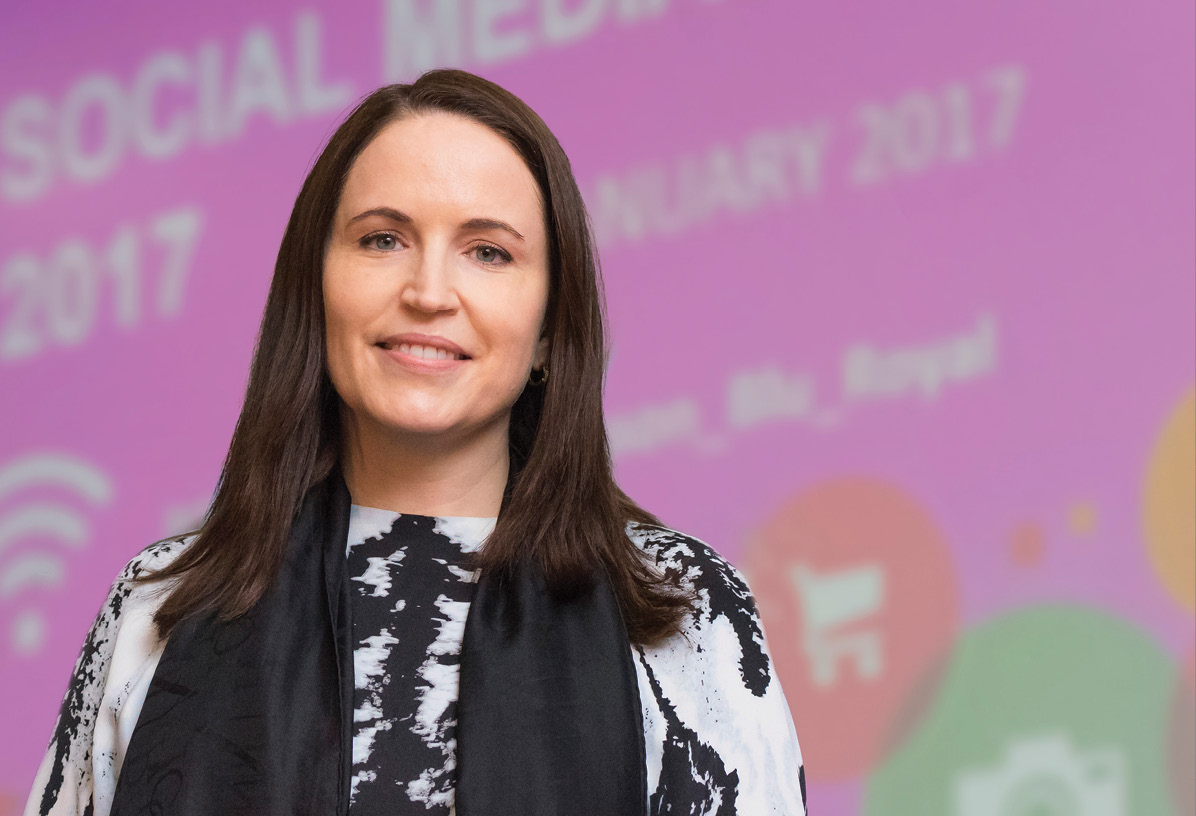
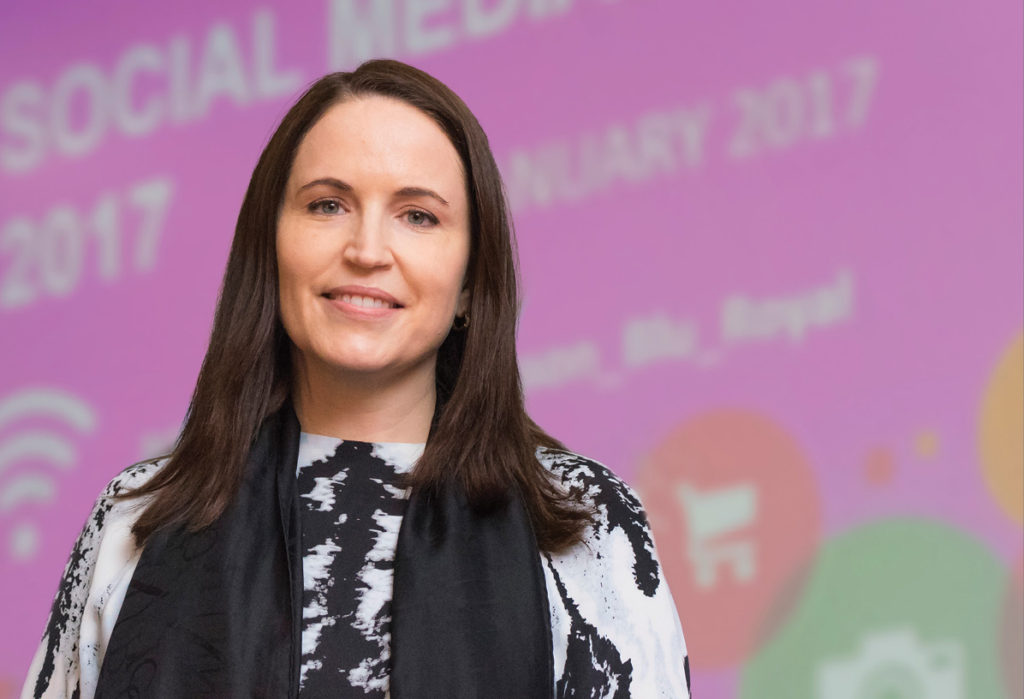
UK and Ireland Country Manager for Pinterest, Adele Cooper, outlines the value of the platform to users and its appeal to brands and businesses.
Addressing delegates at the Social Media Dublin 2017 conference, Adele Cooper explains that a better way of understanding the product is as the “world’s catalogue of ideas” rather than as a traditional social network.
The relatively young platform, which only launched in 2010, offers content from brands and businesses targeted to people based on their interests or searches. Explaining how the platform differs from its popular social media counterparts, Cooper says: “People often assume that people migrate between apps and use them in largely the same way but the reality is that people go onto different apps with very different mindsets. The best way to summarise the differences is that if I go on to Facebook I am looking for updates from friends and family, on Instagram I am usually sharing an aspirational view of my life in the present but on Pinterest I am very much taking an aspirational view on my life for the future and the steps I need to take to get there.”
Cooper identifies three main areas where users tend to spend time within the product:
1) the home feed, which consists of a scrolling feed of content based on topics of interest to the user;
2) the search tool, an option to discover more about topics you request; and
3) the save function, an option to save interesting content on your Pinterest boards for future reference.
She points out the third element is particularly useful for users planning for a future project, ranging from everything to home decoration, party planning through to new hairstyles. “In many ways the save function equates to how people used to rip pages out of a magazine if they saw something they liked, only now it can be done with a click of a button and the content is all in the one area.”
Relating back to comparisons with other social media platforms, Cooper states: “When you think about other apps they are very much about connecting and sharing. Pinterest is very much about discovering and doing. Uniquely, our platform is very much about getting people off Pinterest and inspiring them to do or buy things in real life.”
Turning to the opportunity for brands on the platform, Cooper points out that over half of Pinterest’s 150 million monthly global users are based outside of the US and that 80 per cent of all users use the platform on mobile.
“Pinning is very brand-centric and one key difference between Pinterest and other social media platforms is that over 75 per cent of the content on Pinterest comes from a business or a brand, while the remaining 25 per cent is from publishers and bloggers. It’s very much for products and services. Brands and businesses help to bring great ideas to life on Pinterest and recent studies have shown that over 70 per cent of users end up taking action on their pins. It’s a great opportunity to reach people who are in the consideration mindset.”
Cooper believes that Pinterest is perfectly placed for brands and businesses to make the greatest impact when considering the traditional marketing funnel from awareness, to consideration, to purchase or action.
“When you are thinking about raising awareness of a brand or business the traditional model would be via the TV and the digital model would be via Facebook but these methods are often disrupting what the user is actually accessing the platform for. In terms of action, previously it would have been the yellow pages and today people go directly to Google search. However, often by that stage the consumer has made their decision on what he or she wants to purchase, where Pinterest excels is in those earliest stage of planning while people are still open to new brands and new ideas.”
“The world’s catalogue of ideas.”
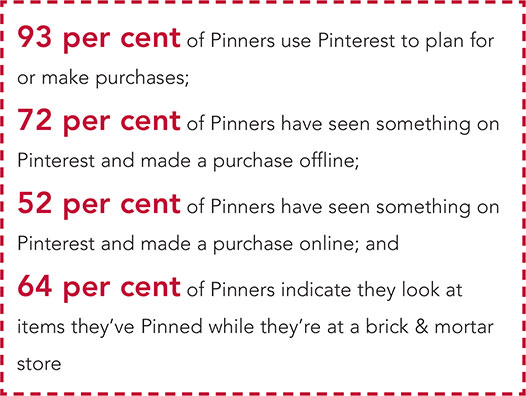
Cooper identifies three key methods for brands and businesses to make best use of Pinterest. The first, she explains, is the least resource intensive and involves adding a save button specific to Pinterest on their own commercial website. “By doing this, users are pinning on your behalf and essentially doing your job for you by bringing your content on to the platform and sharing it with others.” The second method is to compile an organic profile, where the brand or business is able to pin content themselves and the third is to run Promoted Pins.
Cooper took the opportunity to announce that the company are set to launch Promoted Pins in Ireland, Australia and New Zealand.
Promoted Pins
Utilising Promoted Pins brands and business will have two distinct offerings on how best to reach the consumer. Specifically, these are the home feed, where users tend to browse through offered information and the search category, often used by people looking for more specific categorical topics. The offering consists of a choice between buying on a cost per click basis (CPC) or a cost per thousand impression (CPM) basis.
Cooper says: “The way to think about it is that if you are trying to drive brand metrics or raise awareness CPM is the best way to buy, however, if you are trying to drive sales or traffic to your website, or achieve any type of direct response, then CPC is the most efficient way to buy.”
Outlining the effective use of Promoted Pins, Cooper adds: “If nothing else a pin should be helpful. When users are looking to plan something a great visual is important, but they also want to have a detailed description. Lists, especially instructions and how-to tips, do very well on Pinterest and text overlays really aid in a situation where an image mightn’t fully convey what the product is about. Tasteful branding adds credibility to a pin, something that is very important for users seeking to buy. This is also applicable to reasoning for your content to be professional, rather than that which is amateur or user generated.”

